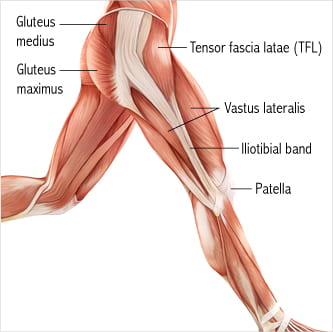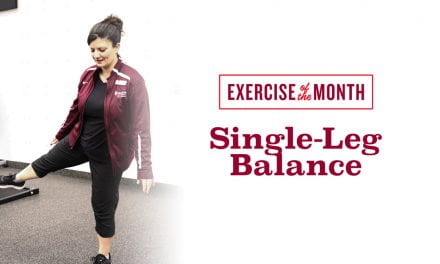Tight or “short” Illiotibial band (ITB), Vastus Lateralis and/or Rectus Femoris (outer and mid leg muscles respectively)  is often the issue when dealing with Patella Femoral Pain Syndrome (PFPS), which was discussed in Part 1.
is often the issue when dealing with Patella Femoral Pain Syndrome (PFPS), which was discussed in Part 1.
What is the IT band?
This muscle has been getting a lot of flack for contributing to anterior knee pain, and other issues. However it is not a muscle, it’s essentially long, dense connective tissue. It connects to lots of areas in the lower body including the Iliac Crest (top of the pelvis), Glute Max (Big butt muscle), and the Tensor Fascia Latae (outer hip muscle)
How IT Band Issues Cause Pain
The ITB runs down the outside of the leg and crosses the knee joint onto the shin. Fibers of the ITB connects onto the knee cap (or patella), and if the ITB is tight or too short, it will pull on the kneecap. This will cause the knee cap to track improperly, and instead of moving within the nice smooth groove on the femur (upper leg bone), it will rub on the outside.
This can lead to pain (especially going up and down stairs, and squatting. The grinding/clicking noises in the knee can additionally lead to a breakdown in cartilage and osteo-arthritis.
Other Common Issues
If the quadriceps muscles (big leg muscle), and more specifically, the Rectus Femoris, is too tight, it will pull the quadriceps tendon. The quadriceps tendon is attached to the knee cap and can also change the tracking from the smooth femoral groove, to something else.
So those are some of the common cause of Patella Femoral Pain Syndrome in the next part, I’ll go over how to help manage the condition.
In Part 3 I’ll be discussing managing the condition.
Sport and Wellness offers Athletic Therapy services for students, employees, members and the public.


